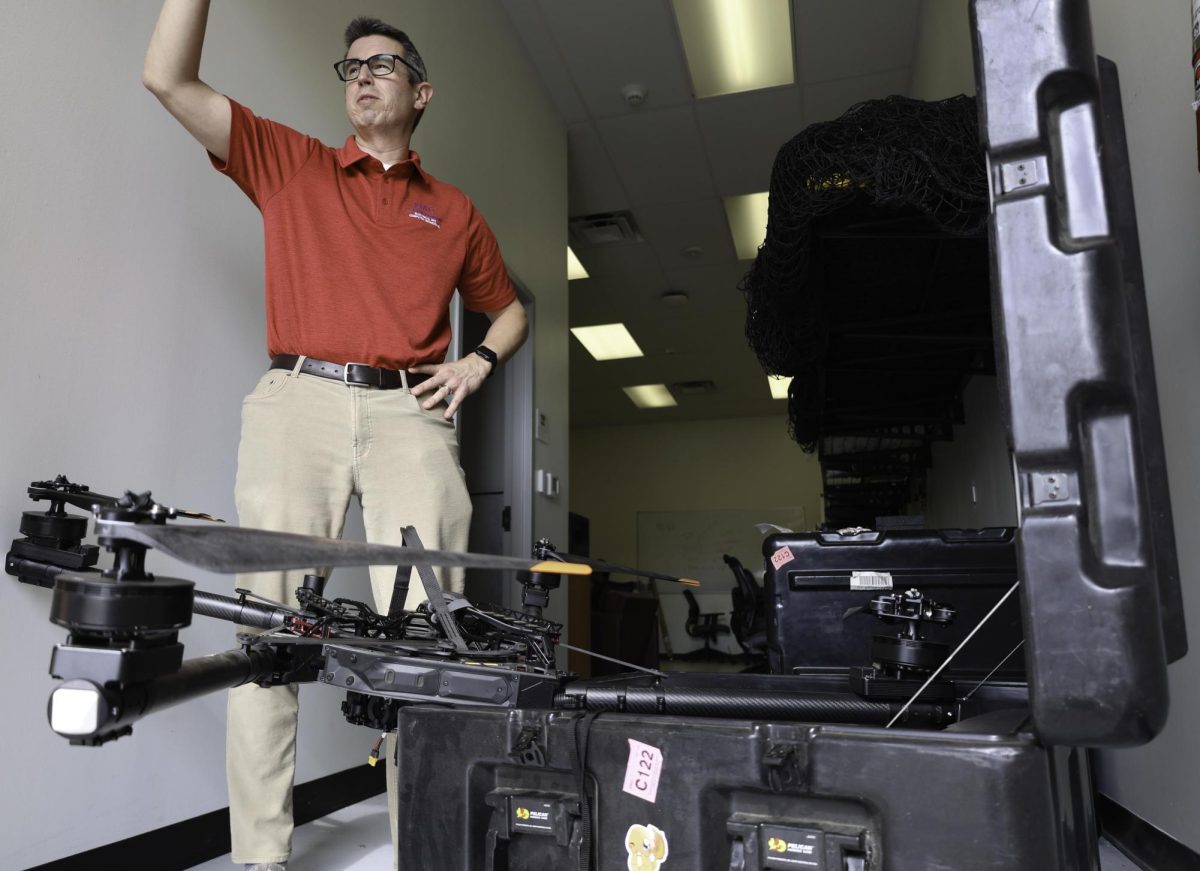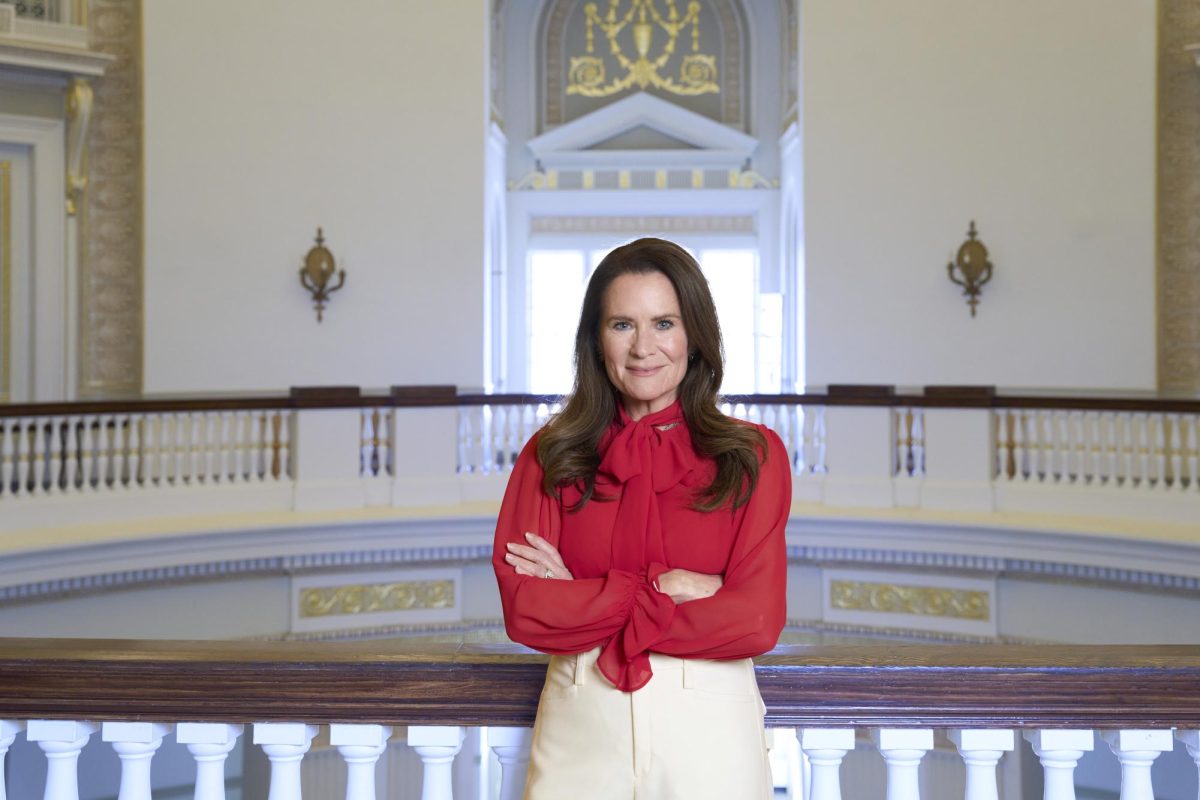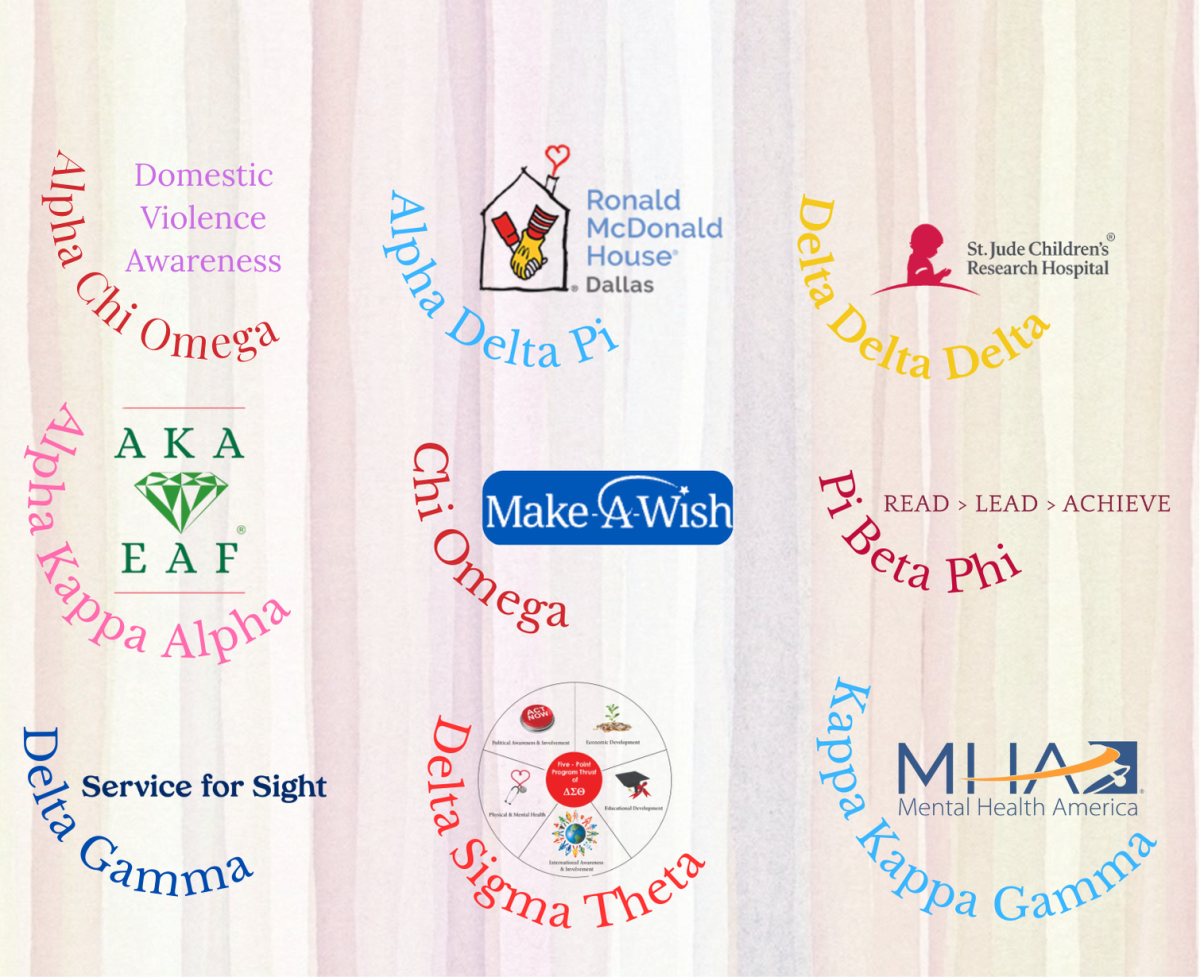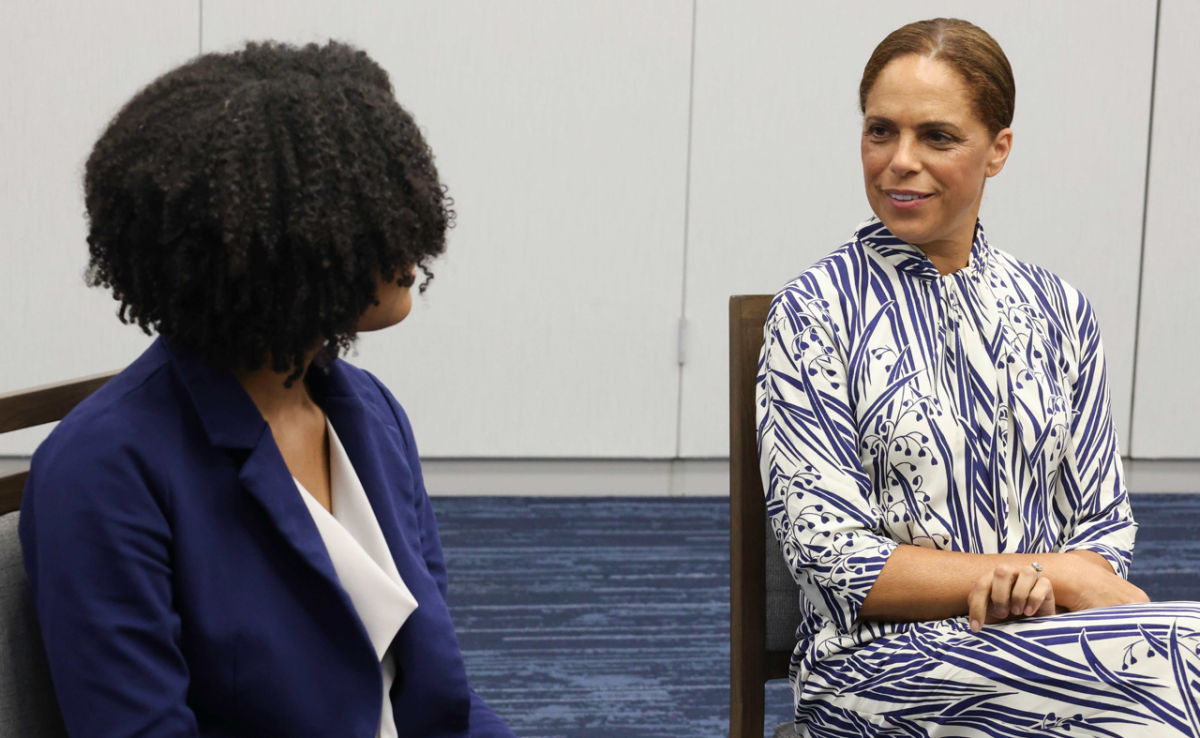Eight SMU Dedman School of Law students traveled to the Karnes Family Detention Center during spring break to volunteer and offer “free legal services to undocumented immigrant women and children fleeing physical and sexual violence in their home countries,” according to an SMU press release.
The Karnes Center is located in Karnes City, Texas, which is around one hour south of San Antonio. Its capacity is 1,158 women and children, but currently has over 3,000 occupants. It’s a secure lockdown center that keeps its occupants on a tight daily schedule, comparable to a prison.
SMU law professor Natalie Nanasi led the students, which included students Pablo Acosta, Victoria Bahrami, Tasheena Byrd, Joshua Karam, Mashall Momin, Alyssa Morrison, Paola Munoz and Hunter Winsauer.
The team held a forum entitled “Crayons as Contraband: Reflections from a Week at the Karnes Family Detention Center” to share their experiences SMU’s Hillcrest Auditorium April 18.

They first addressed their motivation for visiting the Karnes Center before transitioning to a brief overview of immigration law and statistics, the asylum process and the reasons why some women chose to flee their respective countries.
Most of the students said their motivation behind this trip was wanting to give back to the women at the Karnes Center, even if it was only for one week.
Morrison began the discussion by mentioning a few immigration statistics to put things into perspective:
– The U.S. spends over $18 billion annually on immigration-related activities
– Over 400 immigrants die annually while attempting to cross the border
– The U.S. Immigration and Customs Enforcement (ICE) estimates it costs $12,500 to deport one person, but that cost can be as high as $20,000
Morrison also clarified that their clients were not economic immigrants, meaning their actions were not employment or financially based; rather, they were women seeking asylum in the U.S. for themselves and their children.
These women felt their safest option was to pick up their lives and go on the rigorous journey to come to a country that isn’t necessarily welcoming, according to Morrison. Most women came from Guatemala, Honduras, El Salvador, Mexico, Haiti, Romania and Afghanistan.
Winnaeur continued the discussion by providing a brief overview of the asylum process.
Asylum is a legal protection extended to those who fear persecution in their home country. Applicants must demonstrate a well-founded fear of persecution based on a protected class and provide proof they won’t be safe anywhere in their country, meaning there isn’t a possibility of internal relocation, which Winnaeur said becomes subjective in many cases.
The U.S. Immigration and Nationality Act (INA) defines five protected groups for the purposes of asylum claims: race, religion, nationality, political opinion or membership in a “particular social group,” which must have immutable characteristics, be socially distinct and possess peculiarity for it to be valid in an asylum claim.
Byrd followed by discussing the Karnes Center and what conditions were like for the women and children staying there. Byrd noticed the occupants had little to no freedom, and she even saw a guard take away a child’s crayons for coloring on the tables while his mother discussed her asylum claim with Byrd.
“These people have legitimate asylum claims, so there’s no reason to take away their colors,” Byrd said.
Bahrami and Acosta then talked about their interactions with the women at the Karnes Center.
Since Bahrami speaks Farsi, one of the native languages of Iraq, Iran and Afghanistan, she could converse with one woman about her situation instead of having to use a translator. She said this immediately made the woman feel more relaxed and willing to discuss her claim.
Acosta’s ability to also speak Spanish allowed him to have more personal interactions with the women from Central American countries and gain their trust when discussing their cases.
The discussion then shifted to why these women chose to go on the rigorous journey to the U.S. Munoz said the reason many women leave Central American countries is because of physical abuse, gang violence, persecution and fear of their children being abused in the future.
Amid gang violence, Munoz said children become targets of violence if their parents refuse to cooperate with or participate in gang-related activities.
Many of the students felt like they went through a “time elongation” while they were at the Karnes Center and felt like they were there for a month instead of a week. But this aided them in truly understanding the meaningfulness of the work they were doing.
Munoz said it was eye opening to see how difficult the asylum process is and how many women and children suffer because of it. However, she said they wanted help, not sympathy.
“The last thing these women want is for someone to feel bad for them,” Munoz said. “They need someone to help them move up and move on.”
When the time came to leave the Karnes Center, many students were relieved to be leaving, but were also worried about what would happen to the families they worked with.
As happy as he was to leave, Winnsauer said he felt guilty because the families didn’t deserve to be stuck in prison-like conditions.
“It didn’t feel right leaving [the Karnes Center] while all the women were left behind,” Winnsauer said. “It didn’t seem fair.”
Despite only being at the Karnes Center for one week, many students developed interest in what would happen to the people they met and have continued to stay updated on their situations, especially Morrison and Munoz who had to watch a woman’s reaction when her asylum claim was originally rejected while they there. After they returned home, Morrison and Munoz learned the woman began the process again, this time receiving a positive ruling in court.
Morrison said knowing the woman’s claim was ultimately accepted drove home the human aspect of what they were doing at the Karnes Center. For her, it wasn’t just about the legal process, but the lives affected by it.
Although he couldn’t attend the session due to travel delays, Karam sent in a video to speak about his experiences at the Karnes Center.
Karam said he valued his visit to the Karnes Center because he felt fortunate to be able to give back and help the families in need. He said getting to use his legal education and blessings he’s been afforded to help those in need is the most rewarding thing he has experienced during his time in law school.
Karam also mentioned opportunities for people to volunteer at centers around Dallas that serve as legal resources for immigrants and refugees, including:
– Catholic Charities of Dallas Immigration and Legal Services
– Equal Justice Center: Immigration and Employment
– Human Rights Initiative of North Texas, Inc.
– International Rescue Committee (IRC)
– Refugee and Immigrant Center for Education and Legal Services (RAICES)
Karam, along with the other students, encouraged people to serve in whatever capacity possible.








